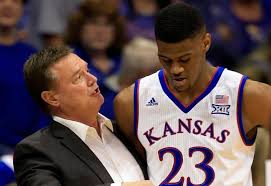Although coaching salaries are paid out of a separate budget, non-coaching salaries in a university’s athletic department are not.
Tax dollars pay these salaries. This is one reasons why Kansans should be concerned how cavalier KU Athletics has been with their money.
As the Sentinel reported last month, beleaguered University of Kansas Athletic Director Sheahon Zenger boasts the highest taxpayer-funded salary in the state. His 2017 salary was $721,735, according to public records requested by the Kansas Policy Institute.
Zenger is hardly alone in enjoying the windfall. According to the Lawrence Journal-World, KU Athletics spent some $21 million for administrative and support staff salaries in 2017, which is roughly $6.5 million, or 45 percent, more than what Kansas State Athletics paid its administrators and support staff in the same year.

2012 was a particularly bountiful year for KU Athletics. After the Big 12 Conference signed a 13-year deal with ESPN and Fox Sports, the athletic department bumped up salaries an average of 42 percent.
KU officials have struggled to explain the large increase in 2013 and the differential in administrative salaries between KU’s and Kansas State’s programs, which are similar in size.
Pat Kaufman, chief financial officer for Kansas Athletics, had a hard time explaining the 42 percent one year bump. “I’m not sure about that particular year’s growth,” Kaufman told the Lawrence Journal-World. Kaufman’s explanation explanation for the disparity in salaries between KU and K-State was no more lucid.
“College sports is the most dysfunctional business in America,” Murray Sperber, a professor emeritus at the University of California-Berkeley and an authority on college sport, told the Lawrence Journal-World. “They should be making huge amounts of profits, but the money just gets sucked up into higher salaries. There is no corporation that would be run that way.”
Although KU’s basketball program has been on auto-pilot since about 1898, KU’s football program under Zenger has been a disaster. The team’s record since 2011 is 12-72, and the squad hasn’t competed in a bowl game since 2008. Attendance at football games has dropped from an average of 42,283 in 2011 to 26,641 in 2017.
At many universities, the football program carries the rest of the sports programs, the cost of which has skyrocketed everywhere post-Title IX.
At KU, football has been a drain on the athletic budget. From looking at athletic department salaries, however, one would think otherwise.



